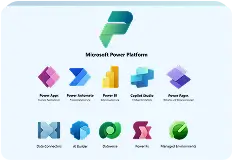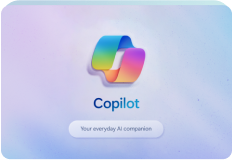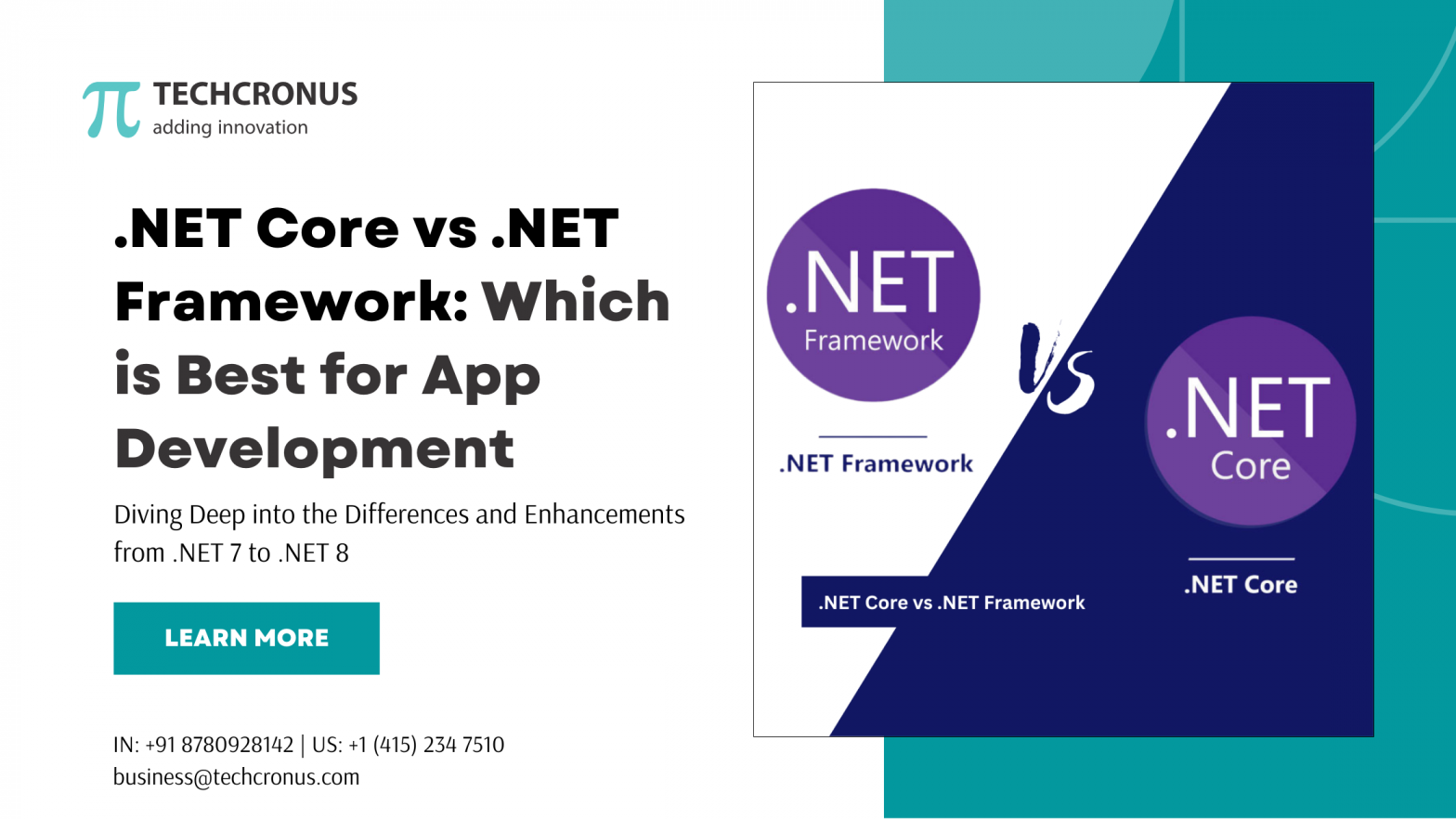Table of Contents
The decision between .NET Core vs .NET Framework for application development holds substantial weight in today’s dynamic software development arena. Developed by Microsoft, both frameworks boast unique features, advantages, and targeted use cases.
This blog endeavors to elucidate the disparities between .NET Framework and .NET Core, aiding small and medium-sized businesses (SMBs) as well as large enterprises in making judicious decisions tailored to their requirements.
What is .NET Framework?
.NET Framework, introduced in the early 2000s, stands as a software development framework tailored for Windows operating systems. It encompasses an extensive class library referred to as the Framework Class Library (FCL) and facilitates language interoperability across various programming languages.
Key Features:
Windows-Based: Primarily caters to Windows-based applications such as Windows Forms, WPF, and ASP.NET.
Mature Framework: Offers stability and a wide range of features and libraries owing to years of development.
Language Support: Supports multiple languages, notably C# and VB.NET.
Developing Business Applications Using .NET:
The .NET Framework, entrenched in a robust Windows-centric ecosystem, serves as a cornerstone in business application development by furnishing a reliable and well-established environment that has evolved significantly over time. Its comprehensive Framework Class Library (FCL) streamlines development through an extensive collection of pre-built functionalities, expediting the creation of robust and scalable Windows applications, spanning from desktop applications using Windows Forms or WPF to web applications with ASP.NET.
The framework’s support for multiple languages, particularly C# and VB.NET, empowers businesses to capitalize on existing codebases and developer expertise, thereby curtailing the learning curve and development timelines. Consequently, businesses can efficiently craft, deploy, and maintain applications crucial to their operations, encompassing internal systems and customer-facing solutions, thereby augmenting productivity and gaining a competitive edge in the digital realm.
What is .NET Core?
.NET Core, introduced in 2016, stands as a free, cross-platform, open-source framework. It embodies a modular structure enabling the development of applications for Windows, macOS, and Linux environments.
Key Features:
Cross-Platform Compatibility: Operates seamlessly on Windows, Linux, and macOS systems.
Modularity: Crafted as a collection of NuGet packages, empowering developers to optimize applications by incorporating only essential components.
High Performance and Scalability: Engineered to deliver exceptional performance and scalability, catering to contemporary workloads and cloud-based architectures.
Developing Business Applications Using .NET Core:
Benefiting from its cross-platform capabilities and modular design, .NET Core emerges as a versatile solution for businesses venturing into modern application development. This framework facilitates the targeting of diverse platforms, including Windows, Linux, and macOS, thereby extending business reach to a broader audience. Its emphasis on NuGet packages enables developers to fine-tune applications, ensuring streamlined and resource-efficient software.
Moreover, .NET Core excels in performance and scalability, making it an apt choice for demanding, cloud-based business applications. Its adaptability equips businesses with responsive, scalable, and future-ready applications, seamlessly aligning with the evolving cloud-centric landscape. This translates into cost-effective development, simplified maintenance, and the agility to respond to dynamic market demands, all of which are pivotal for businesses striving to maintain a competitive edge in the digital age.
Comparing .NET Core vs .NET Framework:
Key differences between .NET Framework and .NET Core can be elaborated in detail across various aspects:

Types of Applications with .NET Core vs .NET Framework:
Both .NET Core and .NET Framework are integral components of the .NET platform, utilized for crafting and executing applications across Windows, Linux, and macOS environments. However, their distinct design and capabilities make them apt for different application types. Here’s an overview of the types of applications suited for each:
.NET Framework
Windows Forms and WPF Applications: These are predominantly utilized for developing desktop applications tailored for Windows. Windows Forms offers a collection of user-friendly UI components, while WPF (Windows Presentation Foundation) facilitates the creation of intricate and dynamic applications with visually rich interfaces.
ASP.NET Web Forms and MVC: ASP.NET Web Forms are employed in constructing dynamic web applications utilizing a drag-and-drop, event-driven approach. In contrast, ASP.NET MVC provides a contemporary, pattern-based methodology for building dynamic websites, fostering a clear separation of concerns.
Web Services: Enables the development of SOAP-based services accessible to clients over the network.
Windows Services: Background services are operational on Windows servers or workstations.
Console Applications: Suited for executing background processes or utilities devoid of a graphical interface.
.NET Core
ASP.NET Core Applications: A cross-platform framework facilitating the creation of modern, cloud-native, internet-connected applications, such as web apps, IoT apps, and mobile backends. ASP.NET Core applications are compatible with Windows, Linux, and macOS environments.
Console Applications: Similar to .NET Framework, with the added advantage of cross-platform compatibility.
Microservices: Ideal for constructing scalable, high-performance microservices architectures.
Blazor Apps: Web applications executing within the browser via WebAssembly, enabling the utilization of C# instead of JavaScript.
Worker Services: Background services capable of running on any platform supported by .NET Core.
Cross-Platform Desktop Applications: Utilizing frameworks like Avalonia or Uno Platform, developers can fashion desktop applications deployable across Windows, Linux, and macOS.
Shared Application Types
Class Libraries: Both platforms facilitate the development of reusable class libraries encapsulating functionality for various applications.
Entity Framework: Entity Framework Core, a cross-platform rendition of Entity Framework, serves as a popular ORM (Object-Relational Mapper) for .NET. It is compatible with both .NET Core and .NET Framework, facilitating data access operations.
This breakdown elucidates the diverse application types catered to by .NET Core and .NET Framework, aiding developers in selecting the appropriate framework for their specific project requirements.
Converting To .Net 5/6 In .NET Core to .NET Framework:
Converting applications from .NET Core or .NET Framework to .NET 5/6 involves several steps, considerations, and preparations, as .NET 5 and .NET 6 represent a consolidation of the .NET platforms into a unified framework supporting a broader range of applications and offering cross-platform capabilities. Here’s a general guide on how to approach the migration:
For .NET Core Applications:
Migrating from .NET Core (especially versions 3.1 or later) to .NET 5/6 is relatively straightforward because .NET Core and .NET 5/6 share a similar foundation.
Update the Project File:
Change the <TargetFramework> element in your project file (.csproj) to net5.0 or net6.0 depending on the version you are targeting.
Review and update package references to their latest versions compatible with .NET 5/6.
Update Your Code:
Utilize the .NET Upgrade Assistant tool or analyze your project for obsolete APIs and update them as recommended.
Thoroughly test your application to identify any runtime behavior changes.
Review Dependencies:
Ensure all dependencies (NuGet packages, libraries) are compatible with .NET 5/6. You may need to update some packages or replace those that are not supported.
For .NET Framework Applications:
Migrating from the .NET Framework to .NET 5/6 is more complex due to significant differences.
Assess Your Application:
Employ tools like the .NET Portability Analyzer to assess how much of your code is compatible with .NET 5/6.
Identify third-party dependencies and verify their compatibility with .NET 5/6.
Plan Your Migration:
For complex applications, consider breaking down the migration into smaller, manageable parts. This might involve migrating individual libraries or components before the entire application.
Decide between a direct migration to .NET 5/6 or an incremental approach through .NET Core 3.1 as an intermediary step, which might be easier for some applications.
Update Project Files and Code:
Convert project files (.csproj) to the new SDK-style format used by .NET Core and .NET 5/6.
Update the <TargetFramework> to net5.0 or net6.0.
Address API changes and compatibility issues. This may involve replacing
Windows-specific technologies (like Web Forms, WCF, and Workflow Foundation) with modern alternatives (like ASP.NET Core and gRPC).
Test Thoroughly:
Testing is crucial to ensure the application behaves as expected on the new platform. Pay special attention to performance, functionality, and integration points.
Leverage New Features:
Once your application runs on .NET 5/6, explore new features and improvements that could benefit your application, such as performance enhancements, new APIs, and cross-platform capabilities.
General Tips:
- .NET Upgrade Assistant: Microsoft provides a .NET Upgrade Assistant tool that can help automate some aspects of the migration for both .NET Core and .NET Framework applications.
- Documentation and Resources: Refer to Microsoft’s official documentation and resources for detailed guides and best practices specific to your application type.
- Community and Support: Leverage community forums, Stack Overflow, and official support channels for advice and solutions to specific challenges you might encounter.
Migration can be a significant effort, especially for large or complex applications, but moving to .NET 5/6 opens up many benefits in terms of performance, scalability, and future-proofing your applications.
The Future: .NET 7 and .NET 8:
The evolution of the .NET ecosystem continues with the introduction of .NET 7 and .NET 8. These versions reflect Microsoft’s commitment to regularly updating their framework to keep pace with modern software development needs.
.NET 8.0 – Long-Term Support (LTS)
- Release Date: November 10, 2026
- LTS Approach: Ideal for applications where stability and minimal changes over an extended period are crucial. LTS versions of .NET Developer are supported for three years after their release or one year after the next LTS release, whichever is longer.
.NET 7.0 – Standard Term Support (STS)
- Release Date: May 14, 2024
- STS Approach: Best for those who want to leverage the latest features and are comfortable with a shorter support cycle. STS versions are typically supported for 18 months.
Use Case Scenarios: What You Should Pick and When
When to Use .NET Framework:
- Legacy Applications: Use for maintaining and extending existing applications built on .NET Framework.
- Windows-specific Applications: Opt for .NET Framework if the application is intended to run exclusively on Windows, utilizing Windows-specific APIs.
When to Use .NET Core:
- Cross-Platform Needs: Choose .NET Core if the application needs to operate on multiple operating systems.
- Microservices: Utilize .NET Core for developing scalable, cloud-based applications and microservices.
- High-Performance and Scalable Systems: Select .NET Core for applications where performance and scalability are paramount.
- Modern Web Applications: Integrate ASP.NET Core for the development of modern web applications.
Coding Differences in .NET Core vs .NET Framework:
API Availability:
- .NET Framework: Provides a broader range of APIs, albeit they are tailored for Windows, potentially restricting development for other platforms.
- .NET Core: Although it features a narrower selection of APIs compared to the .NET Framework, it is continually expanding and follows a more modular approach, enabling developers to utilize only the necessary components for their applications.
Language Support:
Both frameworks support languages such as C#, F#, and VB.NET, although there might be discrepancies in the supported language versions.
Platform-Specific Code:
- .NET Framework: Incorporates numerous Windows-specific functions and libraries, diminishing its suitability for cross-platform development.
- .NET Core: Advocates for platform-agnostic coding methodologies, imperative for preserving compatibility across diverse operating systems.
Project File Structure:
- .NET Core: Adopts a simplified project file structure (csproj), enhancing readability and facilitating easier management.
- .NET Framework: Historically employs a more complex csproj file structure, potentially posing challenges in maintenance.
Package Management:
- .NET Core: Relies heavily on NuGet packages for its modular framework components, offering a streamlined approach to managing dependencies.
- .NET Framework: Can utilize NuGet packages but also includes numerous components by default, potentially resulting in larger application sizes.
Migrating From .NET Framework To .NET Core:
The decision to migrate an application from .NET Framework to .NET Core should be driven by factors such as the requirement for cross-platform functionality, performance enhancements, and adherence to modern architecture practices. The migration process encompasses the following steps:
Assessing Compatibility: Evaluate the compatibility of existing code with .NET Core to identify any potential issues or obstacles.
Updating Libraries: Transition to .NET Standard libraries whenever feasible to ensure compatibility across both .NET Framework and .NET Core environments.
Incremental Migration: Embrace an incremental migration approach, gradually transitioning modules or components from .NET Framework to .NET Core to mitigate risks and streamline the migration process.
Conclusion:
The choice between.NET Core and.NET Framework is determined by the application’s target platform, performance requirements, and future maintenance needs. While the .NET Framework is suitable for existing Windows-based applications, .NET Core is the way forward, especially for new applications that need cross-platform capabilities and improved performance. With the introduction of .NET 7, hiring .NET developers proficient in navigating a unified and more streamlined platform integrating the best features of both worlds becomes imperative.
When choosing a framework, it is crucial to consider more than just personal preference; project requirements and scalability concerns must also be taken into account. Unlock your business potential with our expert .NET development services – Contact us today!























